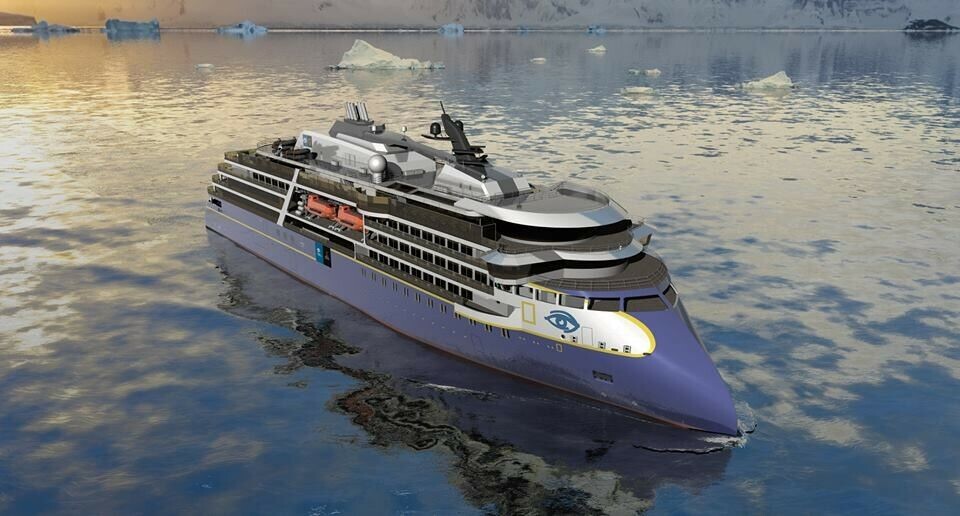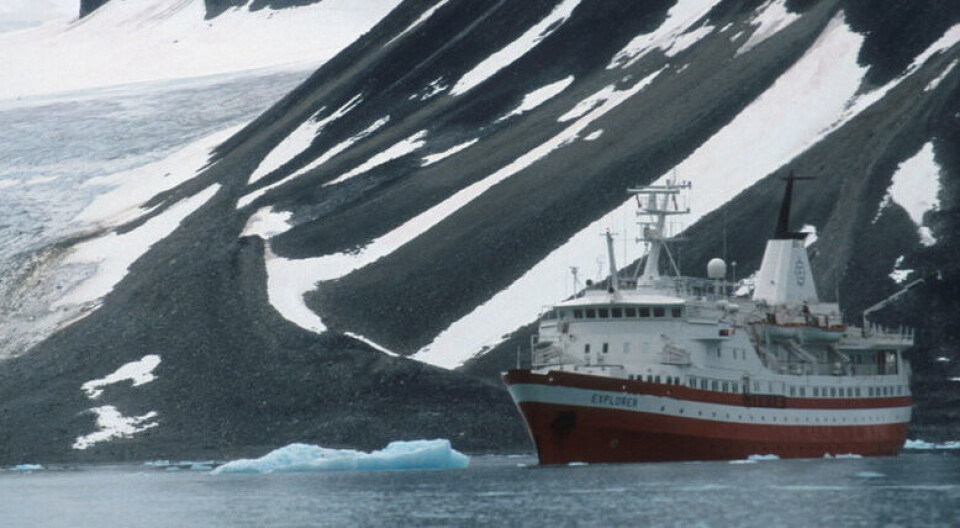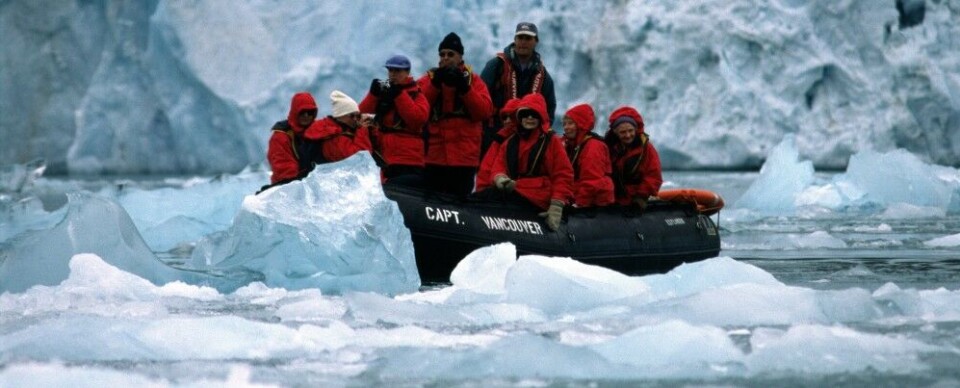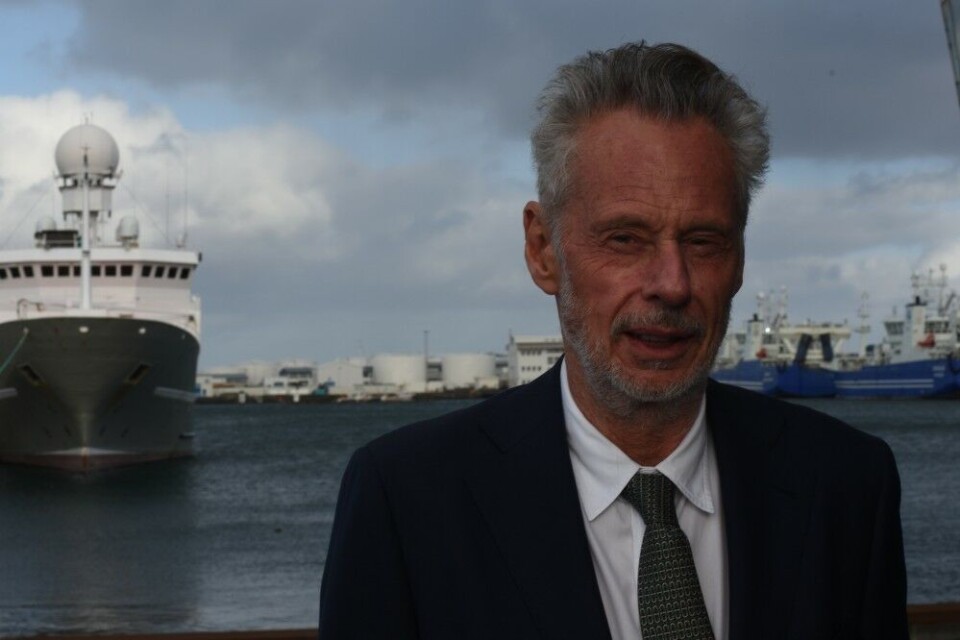
Pioner Arctic cruise-explorer signs deal for new expedition vessel
Lindblad Expeditions' new cruise vessel, to be built in Norway, gets very high ice class for access deep into polar regions.
p.p1 {margin: 0.0px 0.0px 0.0px 0.0px; font: 11.0px Helvetica; color: #000000; -webkit-text-stroke: #000000}p.p2 {margin: 0.0px 0.0px 0.0px 0.0px; font: 11.0px Helvetica; color: #000000; -webkit-text-stroke: #000000; min-height: 13.0px}span.s1 {font-kerning: none}
«The launch of this ship will mark the 50th anniversary year of the first-ever purpose-built expedition ship, «Lindblad Explorer» which was built b my father,» says Sven-Olof Lindblad, President CEO of Lindblad.
Commissioned in 1969, «Lindblad Explorer» was designed for Arctic and Antarctic voyages and became the forerunner for today’s explorer cruise vessels sailing the icy waters of Svalbard, Greenland and North-America. In 1992, the vessels changed name to «Explorer» and the ownership changed several times. Known as the «Little Red Ship», MS «Explorer» sailed cruise passengers along the north coast of Norway, was one of the first to sail north of Spitsbergen, and one of the first to sail into Russia’s little known White Sea region with the Solovki archipelago as a highlight little known to global cruise liners.

In 2007, however, the also became the first expedition cruise vessel to sink in icy waters, when she hit ice in November 2007 while on voyage near Antarctica. The vessel was then own by G.A.P. Adventures.
Luxury on board
Lindblad’s new expedition ship, described by the company to be «the world’s foremost expedition ship» will be launched from Norway’s Ulstein yard with scheduled delivery set in first quarter 2020.
The vessel will have an X-BOW, a distinctive bow that improves sailings in rough seas and provides for lower fuel consumption.

For passengers, the new vessel will offer luxury like the Arctic has never seen before. Most of the 69 cabins will have their own balcony. On board you will find spa and fitness area, including treatment rooms, saunas, yoga room, Jacuzzis, restaurant, outdoor barbecue and bistro area. For off-boat tours, the ship also has kayaks, a remotely operated vehicle (ROV), hydrophones, a video microscope, underwater video cameras, a helicopter landing platform and a fleet of Zodiacs.
Big wave with tourists
With the new vessel, Lindblad Expedition is joining a wave of new expedition ships to set sail for Arctic waters in the next few years. Last year, CEO Sven-Olof Lindblad told the Barents Observer that «tourists are coming in a big wave. 10 new expedition ships for Arctic waters will be delivered by 2019.»
He warned that smelting ice might attract more cruise-liners to sail north because they think the waters will be easier accessible. «The ice is shrinking and tour operators tend to believe that sailings in the Arctic will be easier. They forget that sudden micro-climate circumstances can create very challenging situations,» Lindblad said explaining that being an expedition guide or a captain in the Arctic demands high skills and experiences.

«We need people that are very well trained.»
p.p1 {margin: 0.0px 0.0px 10.6px 0.0px; line-height: 20.0px; font: 17.0px Georgia; color: #292929; -webkit-text-stroke: #292929; background-color: #ffffff}span.s1 {font-kerning: none}span.s2 {font-kerning: none; color: #a80e0f; -webkit-text-stroke: 0px #a80e0f}
Tens of ice-classed cruise ships
A review made by the Barents Observer this spring among major cruise liners shows that 16 new purpose-built expedition vessels for Arctic waters now are in pipe. Miami-based SunStone Ships recently announced contract of four ships with Ice Class 1A and Polar Code 6 to be built in China, also with the Norwegian patented X-BOW design, Seatrade Cruise News reported. The contract includes an option for six more similar vessels each to hold 80 to 95 passenger cabins.
French cruise-liner Ponant last year announced details of its four new ships for luxury expeditions to Arctic waters. Sized for 184 passengers each the vessels hold Ice Class 1C certification. Crystal Cruises are building two new Polar megayatchts. To be launched next year, each vessel has a capacity of 200 guests. In marketing, the company brags that the first vessel, to be named «Crystal Endeavor» will cruise the Arctic; then follow the route of migrating whales along the coast of the Americas and Europe to Antarctica during the winter.
Hurtigruten with hybrid powered vessels
In mid-February this year, Norwegian-based Hurtigruten started the building of «Roald Amundsen» the world’s first hybrid-powered Arctic cruise vessel, that will have the possibility to run on batteries for for a shorter period with out any noisy diesel engines. «Today is a historical day not only for Hurtigruten, but for the global maritime industry. We celebrate the construction start of the first ship in a new generation that will change expedition travel forever,» Hurtigruten CEO Daniel Skjeldam said during the ceremony at Kleven Yards in Norway. Daniel Skjeldam has become a public figure in promoting environmental friendly technologies and is often quoted in media saying northern Norway don’t need new oil drilling, but a sustainable growth in adventure tourism. Vessel number two with batteries is «Fridtjof Nansen» supposed to be ready for sailing in 2019. Two similar ships could be added to the fleet later.
Australia-based Scenic is also currently building its first discovery yacht with Polar Class 6. The 228-passenger ship will sail both the Arctic and Antarctic waters. The new Polar Code will from January 2018 apply to all ships bound for latitudes 60° North, but is covering ships built after January 2017. Some of the requirements are separated engine rooms, modern waste water treatment, adequate garbage stores and engine possibilities to operate without heavy fuel oil.
Oceanwide Expedition late last year commissioned the building of the 180-passenger vessel “Hondius” said to be the strongest ice-strengthened vessel to sail Polar regions. The vessel will have her maiden voyage in 2019. A year with a summer where the coasts of Svalbard, Franz Josef Land, Iceland, Greenland and northern Norway will get somewhat crowded with new polar expedition cruise ships.
Options for two more

p.p1 {margin: 0.0px 0.0px 14.0px 0.0px; line-height: 16.0px; font: 14.0px Helvetica; color: #333333; -webkit-text-stroke: #333333}p.p2 {margin: 0.0px 0.0px 13.0px 0.0px; line-height: 15.0px; font: 13.0px Helvetica; color: #333333; -webkit-text-stroke: #333333}span.s1 {font-kerning: none}span.s2 {text-decoration: underline ; font-kerning: none; color: #0782c1; -webkit-text-stroke: 0px #0782c1}
Lindblad Expeditions says in their press-statement that their contract with Ulstein includes an option for two additional ships to be delivered in subsequent years after the first vessels maiden voyage in 2020.
That means that up to 20 new purpose-built expedition vessels for Arctic waters could be sailing in Svalbard, Greenland and Franz Josef Land areas during summer season some few years from now.
p.p1 {margin: 0.0px 0.0px 14.0px 0.0px; line-height: 16.0px; font: 14.0px Helvetica; color: #333333; -webkit-text-stroke: #333333}p.p2 {margin: 0.0px 0.0px 13.0px 0.0px; line-height: 15.0px; font: 13.0px Helvetica; color: #333333; -webkit-text-stroke: #333333}span.s1 {font-kerning: none}span.s2 {text-decoration: underline ; font-kerning: none; color: #0782c1; -webkit-text-stroke: 0px #0782c1}
















